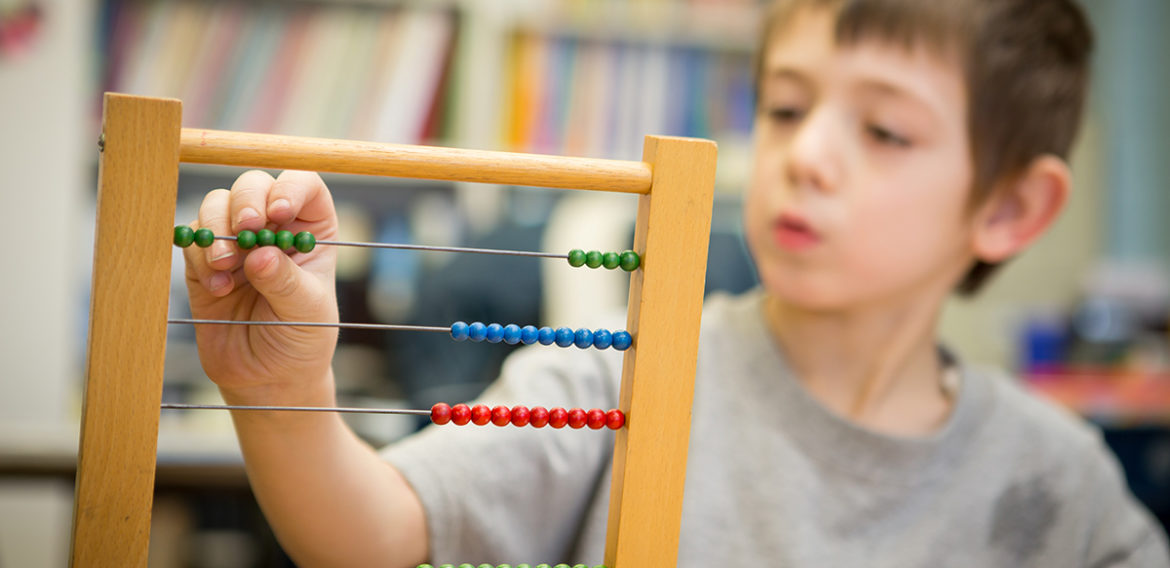Reigniting Math: Connections Over Corrections and the Embrace of Wonderment
Easily, the most successful course I’ve developed over the last few years is one called Mathacadabra: The Magic of Math*. In it, students trace the mythological magic square from ancient China to Ben Franklin, use Fibonacci and the Golden Ratio to see if they’d have cut it as an Olympian supermodel in ancient Greece, test their common-sense view of reality with topology and the Moebius strip, and learn all order of mental math agilities, including an exploration of the “memory palace” method espoused by both Sherlock Holmes and U.S. memory champion Ron White.
Bear with me…this post is not a bragfest on my curriculum writing skills. Rather, I’m hoping my passion and enthusiasm for this Math-based content is coming across clearly, because I need to contrast it with its stark opposite: my past self.
Were there a magic thread I could trace back through time, perhaps I could identify that moment, or at least a cascade of micro-moments, when I broke from Math and began to identify it–at least subconsciously–in the same life category as “Novocaine shots into my gums” and “soggy green beans.” As a young boy with the “gifted” label and some of the learning opportunities that entailed, I had consistent opportunities to embrace Math, to see beyond its facade of empty numerals and operations. But somewhere along the way, I’d failed to connect Math to my already voracious curiosity about things like the composition of the rings of Saturn, the concept of infinity, the physics of black holes, or even my obsession with LEGO construction and fascination with breaking new speed records on my Big Wheel.
“I’m not a math person.” As Mindset author Carol Dweck has highlighted, this phrasing and self-conceptualization can become a misguided badge of honor. But it isn’t only struggling students who create such a shield to protect themselves from the perceived slings and arrows of the most taken-for-granted of our core subjects. Over the years, I’ve seen that our brightest students are just as likely to see math as the dark cloud of their school day, to be endured like a perfectly timed and predictable bout of bad weather.
For me, that disconnect persisted well into adulthood, driving me as deep into the refuge of the humanities as possible, where I pleaded for sanctuary from the cold, heartless reach of Math at the feet of Keats, and Steinbeck and an entire lineage of poets and philosophers who seemed to share my seething resentment for the dark art of repetition and red-marked worksheets. Instead of seeing Math as a layer to my understanding of the world, I’d come to associate it with a tedious attention to a circular system of numerals and symbols with no real connection to things beyond its oppressive logic. I wish I could say that revolutions in Math education have identified, diagnosed and bridged this chasm, but I’m afraid this Math disconnect is prevalent and will continue for many otherwise highly curious and bright young students. The problem, in essence, is that rather than embracing the origin of curiosity in the arts and humanities, most Math curriculum takes the pretentious stand that it legitimately exists in isolation of the arts, as a final and authoritative anchor of STEM. If you don’t want to lose more students like me to the S.S.M.H.E.M (Secret Society of Math-Hating English Majors), here’s what we must do: broaden our conceptualization of “Math” to include, and in fact begin from, the intersection of the world and our sense of wonderment about it.
This approach to Math, which I call “Connections Over Corrections” for its ability to incite curiosity and deepen our appreciation of an interconnected universe of beings, objects, and ideas, has a couple simple premises:
Allow Math to arise organically in an environment of open, passion-based inquiry, not in isolation.
Drill and kill approaches to math create a false, insular understanding that mastering math for math’s sake is some kind of academic achievement. Math mastery is an achievement only when used as a tool for more holistic goals: solving an engineering problem, coordinating angles and lines in a wall-sized mural, calculating imperceptible light shifts in the hunt for exoplanets. Don’t worry, no one is denying there’s a basic foundation of math concepts and skills to be grasped and even mastered–heck, there’s even a place for flash cards! But when the next skill to be learned and mastered arises organically out of the problem at hand,
CONNECTION is inevitable, and a long-term grasp of why that skill is important is encouraged.
Emphasize Math as yet another LANGUAGE with which to understand phenomena, not a “pure” reductionist explanation stipped of all mystery.
The Math of my childhood classroom, especially in secondary school, came across as the antithesis to my unnatural passion for poetry. If someone had shown me the interaction between Math and Poetry (“Hey, let’s try a Fibonacci sonnet!”), perhaps that would have provided an opening just wide enough to let Math back in.
While developing a growth mindset can play a huge role in encouraging and re-engaging “lost” or reluctant mathematicians, I argue there is a more powerful (and much more challenging) approach. Let’s leave space in our curriculum for organic connections to reinforce curiosity and drive problem solving, and allow wonderment – raw, childlike amazement with the universe – be the fuel that energizes, and ultimately reignites, our learning of math.










No Comments